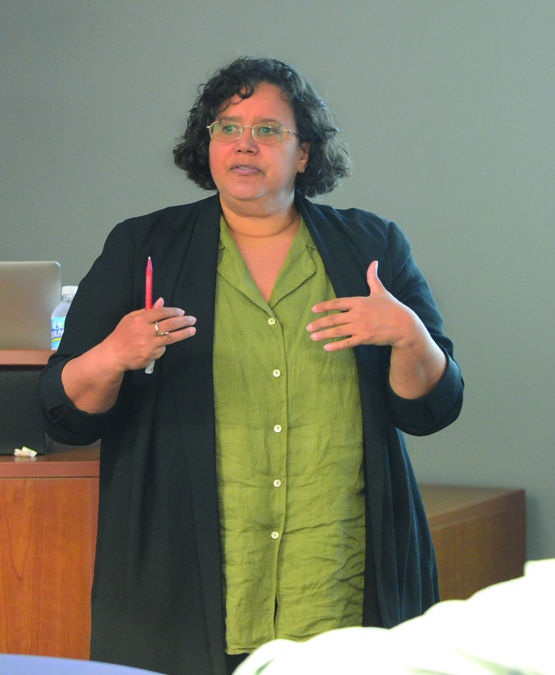Lecture: Mummy genes guide research on AIDS, leprosy
September 11, 2013
Historians have long been aware of the world’s deadliest epidemics, including tuberculosis, malaria, smallpox, syphilis, cholera and the plague. But some factors surrounding diseases recorded in history have vexed historians.
“There are puzzles and holes in our narrative,” historian Monica Green said, referring to what she and her colleagues know about leprosy. “Where did [leprosy] start? How did it spread? If leprosy is relatively new, then why do 95 percent of humans have immunity toward it?”
The study of genetics is helping to fill in these gaps, said Green, an Arizona State University history professor and visiting scholar at Pitt. During her Tuesday afternoon lecture, which lasted from 4 to 5:30 p.m. in room 3703 of Posvar Hall, she told an audience of about 20 people that microbiologists have been reconstructing the historical narratives of diseases through genetics.
Green explained that the scientists do this by analyzing genomes in human remains, allowing researchers to diagnose humans who have long been dead. While these discoveries provide a better understanding of the history, they have clear implications for public health today.
“Everything we know about the history of HIV is because of the work of geneticism,” Green said.
She continued on to say that genetic testing can use the DNA of mummies to identify several diseases, such as leprosy and AIDS, that still affect people on a global scale today. Once researchers find these traces of diseases in human remains, they use their discoveries to build phylogenies, or family trees, that show both the timeline and map of how the diseases spread.
Green identified geneticism as a key factor in understanding the story of how the AIDS virus has spread, as well as the future of the disease.
“AIDS has helped us to think globally. It has forced us, reluctantly forced us, to move beyond our own narrative. It connects us all,” she said.
Until a little more than 10 years ago, Green said that researchers used texts and artifacts, which then had to be interpreted by historians, to identify diseases that infected people in the past. This method relies on historical records, which are vulnerable to misinterpretation.
Now, researchers are identifying traces of pathogens in the DNA of human remains, which allows microbiologists to locate where historically relevant diseases began and how far they spread.
“It’s extremely interesting to see history and microbiology and genetics come together to not just look into the past, but to work towards the future and to dig up the genetic narrative and to use historical information to fight diseases,” said Wilbert van Panhuis, a research assistant professor in Pitt’s Department of Epidemiology.
Genetically identified pathogens can tell researchers whether or not a disease originated within an animal before spreading to the human species.
“My generation of historians were brought up with the belief that we cannot diagnose medical conditions in the past,” Green said.
Green said it was not possible to identify diseases retrospectively until the discovery of pathogens located within DNA.
“The [Black] Plague does not have a tight narrative,” she said. “How did it get to everywhere else in the world? We still don’t know.”
Now, researchers who once depended on cultural narratives of disease epidemics can rely instead on hard evidence found within the bodies of the afflicted.
“It’s inspiring how she puts it in terms of different fields and brings together members of different areas of study through these studies of diseases,” said Urmi Engineer, who is working on a postdoctoral assignment in the World History Center at Pitt.



